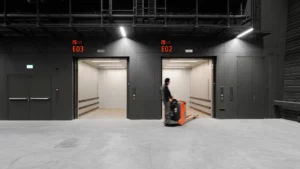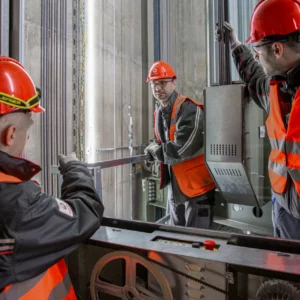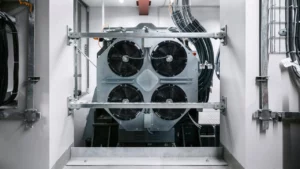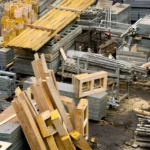Types of elevators: which one is right for your construction project?

Types of elevators Which one is right for your building project?
Elevators are an important part of designing a building, whether residential or commercial. But which type of elevator is right for you?
Learn about the four main types of elevators and configuration requirements to meet your performance objectives.
The four main types of elevators
Passenger elevator
A passenger elevator is any elevator intended for the transport of people through a building. These elevators can vary drastically in terms of size, speed, and interior options depending on the use of the elevator.

Service elevator
A service elevator is found in many commercial buildings and is intended for the transport of goods through the buildings by employees, such as the housekeeping staff moving cleaning carts through a hotel. These elevators are also used in hospitals for the transport of patients on hospital beds. To comply with code requirements, service elevators are typically more robust and deeper than standard passenger elevators, so they can navigate larger items through the building.

Freight elevator
A freight elevator is intended to move very heavy loads, such as cars or cargo, in industrial buildings. These elevators are not intended for passenger transport and are designed to withstand tougher working conditions, which is why their interiors are focused on heavy steel walls and floors rather than more attractive options.

Dumbwaiter
A dumbwaiter is a small freight elevator. It is often used for the transport of food in restaurants. However, they can be found in both commercial and private buildings.

Elevator hoist systems
Building type can also influence your hoist system when designing an elevator. Understanding the terminology between various types of elevator hoist systems will help you determine which models or types of elevators may be the most appropriate for your building.
Common types of elevator hoist systems include:
Traction elevators
This type of elevator operates via a pulley system, using steel ropes or belts and a counterweight, to move the cabin up and down. There are two types of traction elevators: gearless traction and geared traction. Gearless traction elevators are the more advanced solution, with a wheel attached directly to the motor, and counterweights are used to operate the hoisting system. Geared traction uses a gearbox to turn the hoisting sheave and lift the elevator. These systems are usually slower than gearless systems.
Overall, traction elevators are typically more energy efficient and provide a smoother and quieter ride for passengers. Most modern elevators are gearless traction, which is considered the most energy- and space-efficient solution available.

Hydraulic elevators
This type of hoist system is usually only used in low-rise buildings, typically up to six stories high, or to transport extremely heavy loads. Hydraulic elevators are lifted by pistons from below. These elevators require more energy to operate than other elevator models and, due to the introduction of machine room-less elevators with high-efficiency machines and drives, have largely been replaced in the elevator market.
The elevator machine room
With advancing technology, it is no longer mandatory to have an elevator machine room to house the machine and drive components.

Machine room-less (MRL)
Machine room-less systems can be either traction or hydraulic. By incorporating more compact hoisting sheaves, they do not require a machine room to operate the lift, and the machine is located directly in the elevator hoistway. This provides the optimal use of space for the building design.

Machine room (MR)
Machine room systems can be either traction or hydraulic. In traction elevators, the machine room is typically located above the hoistway. However, the machine room can also be located at the bottom of the hoistway or in a room adjacent to the elevator bank.









